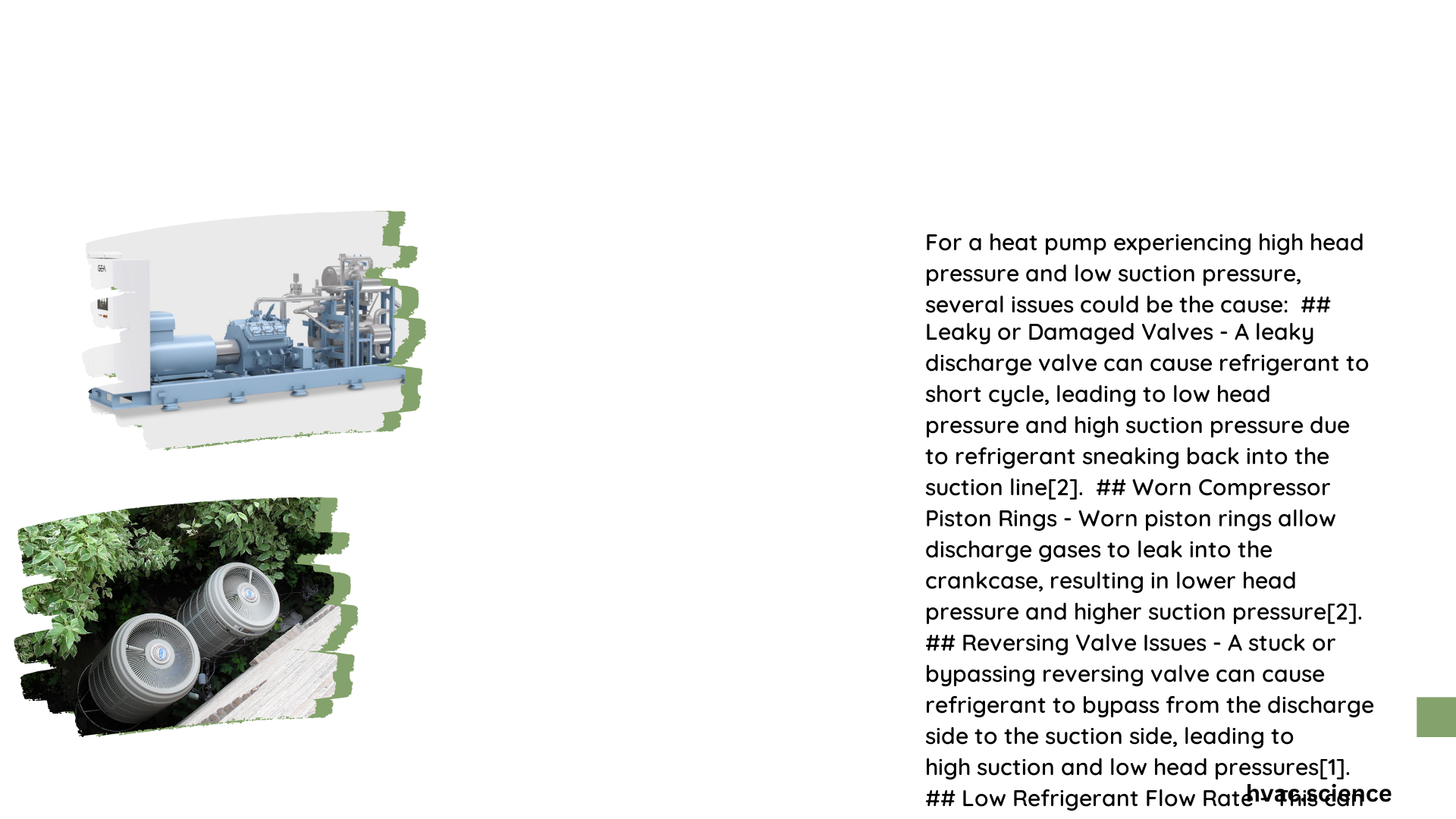Heat pump systems experiencing high head pressure and low suction pressure represent critical operational challenges that can significantly impact system efficiency, energy consumption, and overall performance. These symptoms often indicate underlying mechanical, refrigerant, or airflow complications that require precise diagnostic approaches and targeted interventions to restore optimal heat pump functionality and prevent potential long-term damage.
What Causes High Head Pressure in Heat Pumps?
Why Does Refrigerant Charge Affect System Performance?
Refrigerant charge plays a crucial role in heat pump performance. An overcharged or undercharged system can lead to significant operational issues:
| Refrigerant Condition | Head Pressure Impact | Suction Pressure Effect |
|---|---|---|
| Overcharge | Increases dramatically | Reduces significantly |
| Undercharge | Decreases | Drops substantially |
| Optimal Charge | Stable | Consistent |
Key Diagnostic Indicators
- Pressure Range Deviation: Typical head pressures should range between 200-250 psi for standard 3-ton units
- Temperature Correlation: Higher ambient temperatures increase head pressure
- Superheat/Subcooling Measurements: Critical for precise refrigerant charge assessment
How Do Airflow Restrictions Impact Heat Pump Performance?
Airflow restrictions can dramatically influence heat pump operations:
- Filter Blockages
- Reduces air circulation
- Increases system strain
-
Potentially causes compressor overheating
-
Coil Contamination
- Reduces heat transfer efficiency
- Creates additional system resistance
- Leads to increased energy consumption
What Technical Factors Contribute to Pressure Anomalies?
Compressor Functionality Assessment
- Mechanical Wear: Internal component degradation
- Valve Performance: Expansion and reversing valve conditions
- Lubrication Status: Critical for smooth operational dynamics
Diagnostic and Resolution Strategies

How to Measure and Interpret Pressure Readings?
Required Tools:
– Manifold gauge set
– Temperature probes
– Superheat/subcooling calculators
What Professional Troubleshooting Techniques Exist?
- Comprehensive system pressure analysis
- Refrigerant charge verification
- Airflow measurement
- Component integrity assessment
Potential Resolution Approaches
| Issue | Potential Solution | Estimated Cost Range |
|---|---|---|
| Refrigerant Overcharge | Precise evacuation and recharge | $150 – $500 |
| Airflow Restriction | Filter/coil cleaning | $100 – $300 |
| Compressor Malfunction | Component replacement | $500 – $2,000 |
Performance and Efficiency Considerations
How Does Pressure Imbalance Affect System Efficiency?
- SEER Rating Impact: Potential 10-20% efficiency reduction
- Energy Consumption: Increased operational costs
- System Longevity: Accelerated component wear
Preventative Maintenance Recommendations
- Regular professional inspections
- Quarterly filter replacements
- Annual comprehensive system evaluation
When to Seek Professional Intervention?
Immediate Professional Consultation Required If:
– Persistent pressure inconsistencies
– Unusual system noise
– Significant performance degradation
– Temperature regulation challenges
Technical Complexity Warning
⚠️ Caution: Heat pump high head pressure and low suction issues involve complex thermodynamic interactions. While basic troubleshooting is possible, comprehensive diagnostics require specialized training and professional expertise.
References:
– HVAC Troubleshooting Guide
– Refrigeration System Dynamics
– Heat Pump Performance Standards
